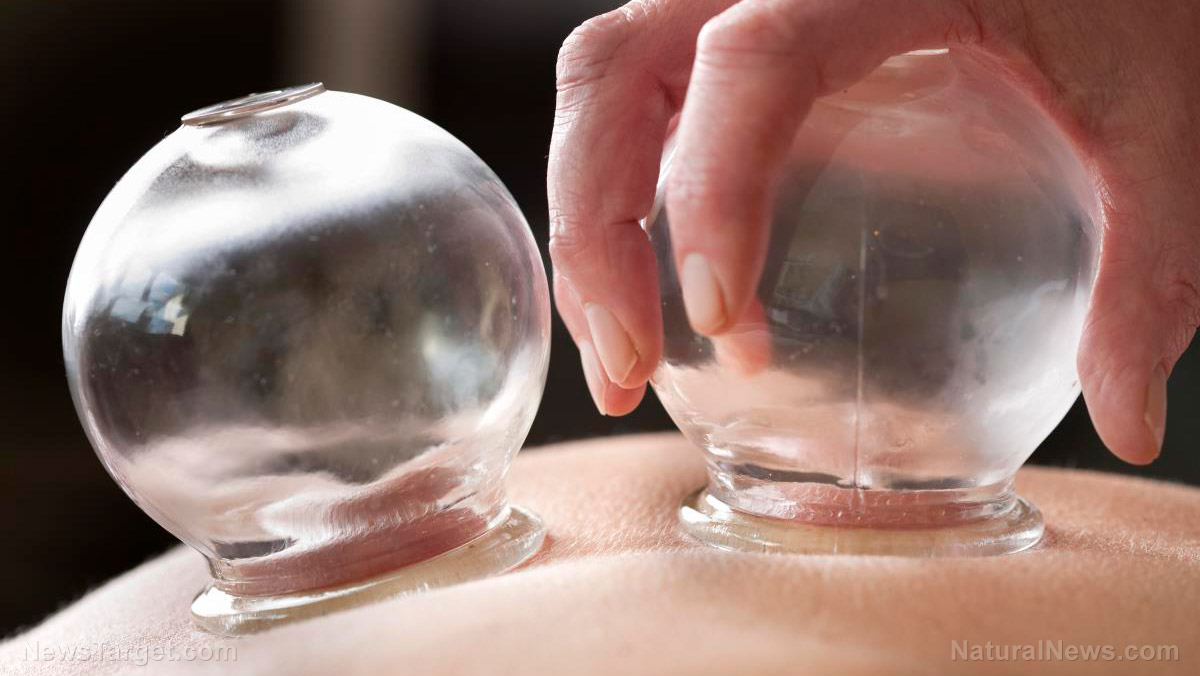Study: Dry cupping can reduce chronic lower back pain
02/11/2019 / By Michelle Simmons

Cupping is one of the oldest traditional therapies worldwide for treating musculoskeletal diseases. In a study published in the journal BMC Complementary and Alternative Medicine, German researchers assessed its effect on chronic lower back pain and found that it effectively relieves lower back pain.
Researchers assessed the effectiveness of two different forms of dry pulsatile cupping — pulsatile cupping and minimal cupping — in people with chronic lower back pain compared to medication on demand. In pulsatile cupping, strong negative pressure is generated with a pump. On the other hand, minimal cupping involves generating weak negative pressure.
For the study, the researchers enrolled 110 people who suffer from chronic lower back pain and then randomly divided them into three groups. One group of participants received regular eight pulsatile cupping sessions along with paracetamol on demand. Another group received eight minimal cupping along with paracetamol. Lastly, a control group only received paracetamol on demand.
The researchers assessed the intensity of pain and back function of the participants after four and 12 weeks. Additionally, the participants answered questionnaires regarding their quality of life after four and 12 weeks.
The results of the study revealed that both pulsatile cupping and minimal cupping reduced chronic lower back pain and improved back function after four weeks compared to the control group. There were no significant differences between the effect of pulsatile cupping and minimal cupping after four weeks. However, after 12 weeks, only the pulsatile cupping group experienced chronic lower back pain relief compared to the control group. In addition, the researchers observed improvements in quality of life in the pulsatile cupping group after four and 12 weeks.

With these findings, the researchers concluded that pulsatile cupping and minimal cupping provide pain relief to people with chronic lower back pain after four weeks. However, only pulsatile cupping caused significant effects compared to control after 12 weeks. These findings suggest that dry cupping is an effective alternative for treating chronic lower back pain.
More ways to treat back pain without using drugs
Researchers have been trying to find alternatives to painkillers and anti-inflammatory drugs as these cause harmful side effects when used over long periods of time. As of today, researchers have looked at these popular natural remedies for back pain relief:
- Acupuncture: In a 2008 research review published in the journal Spine, the authors found strong evidence that acupuncture can be a great supplement to other forms of conventional therapy for low back pain. Additionally, they found moderate evidence that acupuncture is more effective than no treatment for reducing back pain.
- Chiropractic care: Chiropractic spinal manipulation is said to reduce pain and muscle tightness and promote healing. A research review published in the Journal of Manipulative Physiological Therapeutics suggests that chiropractic care appears to improve symptoms and function in people with chronic lower back pain, acute low back pain, and sub-acute low back pain. Combining it with exercise will likely accelerate and improve outcomes and prevent back pain episodes in the future.
- Massage therapy: Massage therapy may provide relaxation and relief to people with back pain. Another research review published in Spine showed that massage therapy might be beneficial for people with subacute and chronic nonspecific low back pain, particularly when applied with exercises and education. (Related: Non-invasive treatment for low back pain: Controlled “core muscle release technique” provides effective relief.)
- Anti-inflammatory herbs: Inflammation is believed to contribute to the development of back pain. Certain herbs that offer anti-inflammatory effects may be beneficial for back pain relief. One of these anti-inflammatory herbs is white willow bark, which has pain-relieving properties as aspirin. Another herb for back pain relief is the devil’s claw, which contains anti-inflammatory properties.
While more research is needed before any of these remedies can be used as a standard treatment, these remedies provide relief for mild to moderate back pain. However, before trying any of these alternatives, it’s best to consult a health professional first to avoid worsening your condition.
Read more news stories and studies on natural treatments for chronic lower back pain by going to BackPain.news.
Sources include:
Submit a correction >>
Tagged Under:
alternative treatments, back pain, chronic low back pain, chronic lower back pain, cupping, dry cupping, low back pain, minimal cupping, natural remedies, Natural Treatments, pain relief, pulsatile cupping
This article may contain statements that reflect the opinion of the author





















